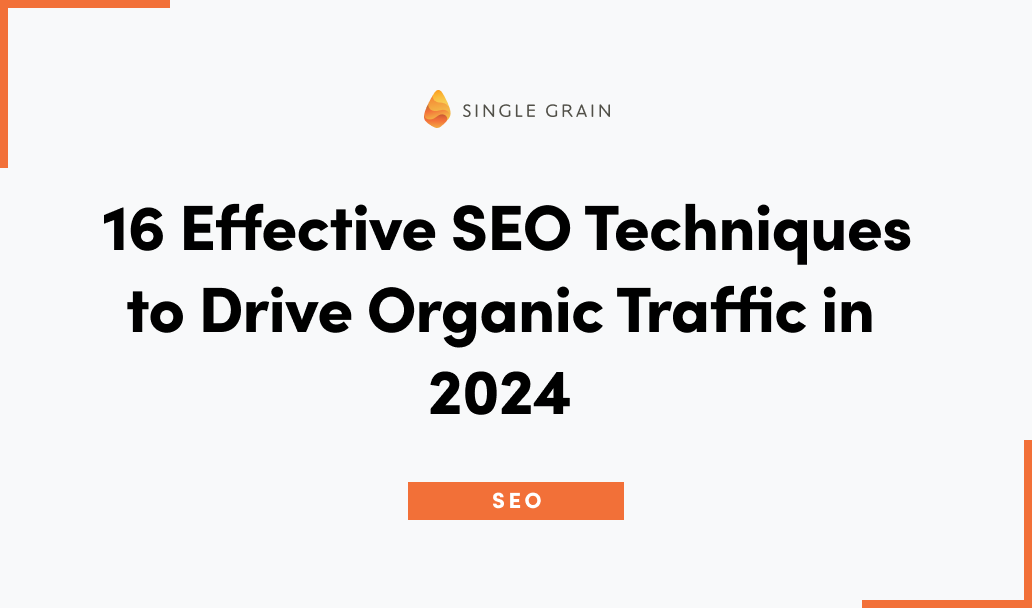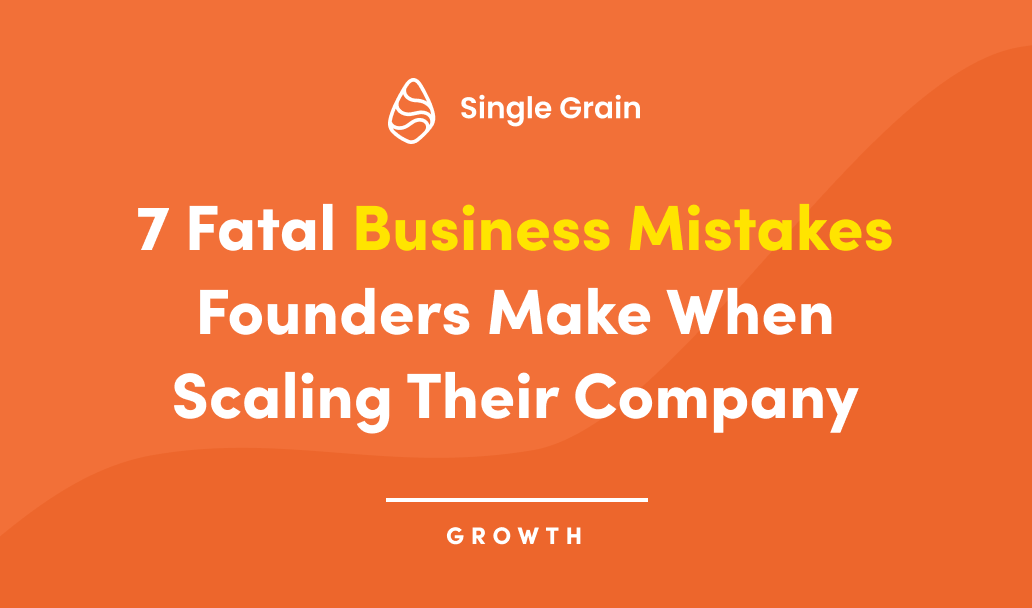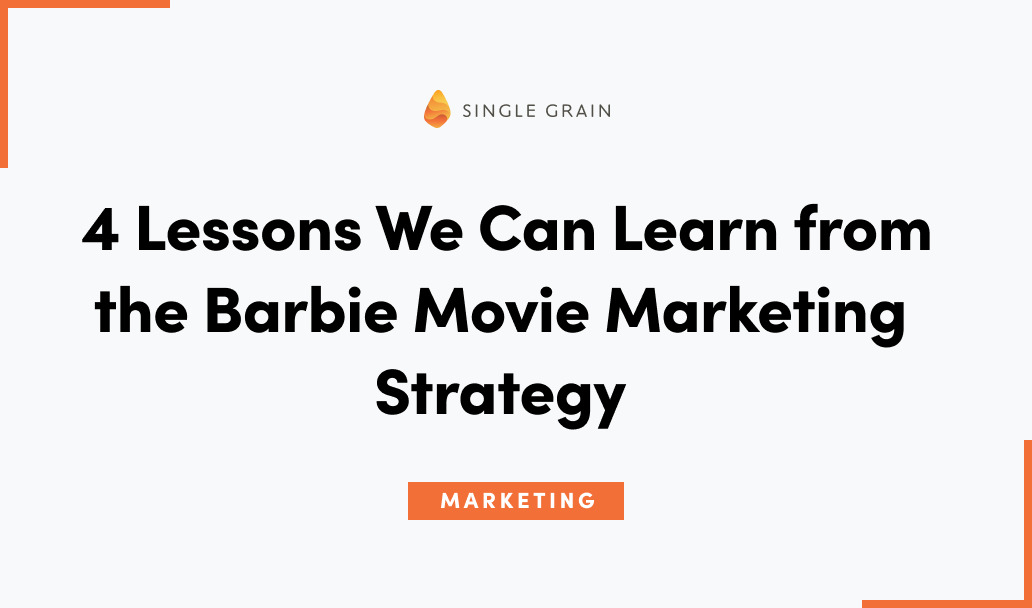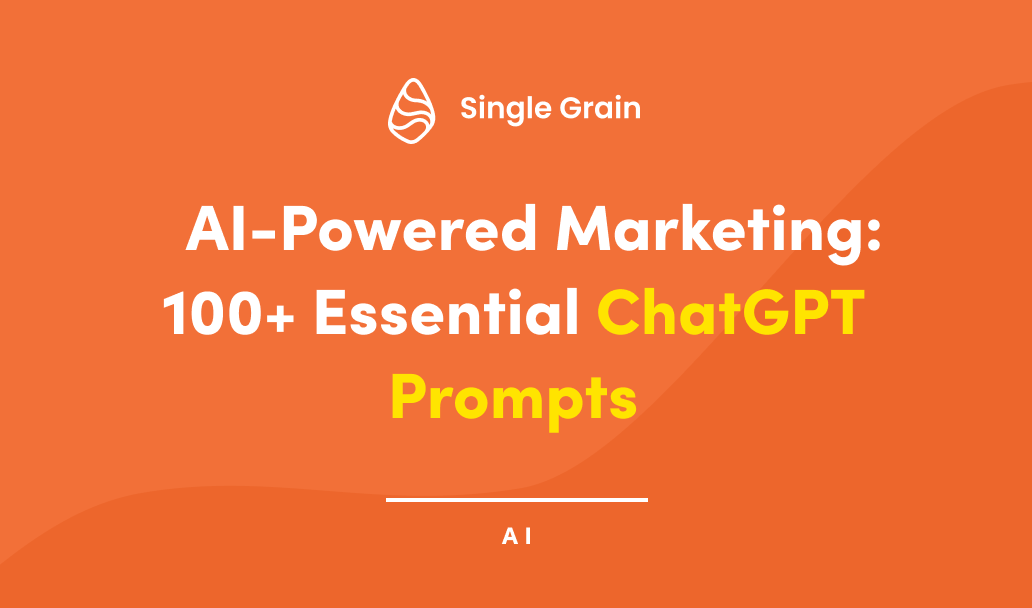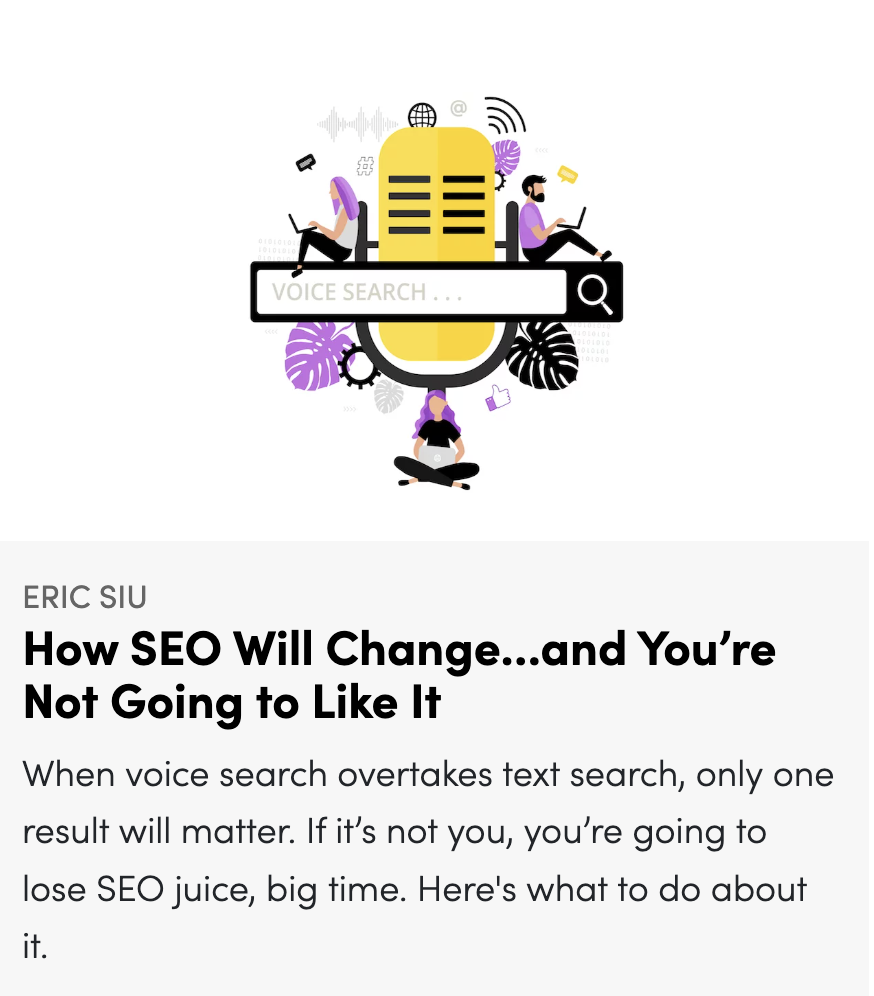Updated February 2024.
When countless pieces of content compete for attention, a compelling headline is not just a necessity — it’s your first and often only chance to make an impression. But the question is: how to write headlines that grab attention and drive clicks.
The right headline can skyrocket your blog post up the SERPs and significantly increase your click-through rate.
This guide delves into the elements that make a headline irresistible, introduces you to several hero headline formulas that consistently deliver results, and provide examples throughout to see click-worthy headlines in action.
The Importance of Headlines in Content Strategy
Great headlines are the lifeblood of your content. You can have have the best blog post in the world but if your headline doesn’t do it justice, you’ll be reeling from the lack of likes, shares and comments – not to mention readers. According to Copyblogger:
About 80% of people will read your headline, but only 20% will read the rest of your content.
The job of a good headline is to get people to click through to your content, but here’s the problem – the Internet has a practically infinite amount of content and most people are suffering from a severe info-overload coma.
The Internet is a crowded place:
- On average, 252,000 websites are created every single day.
- About 7.5 million blog posts are published every day.
- 500 hours of video are uploaded every minute on YouTube.
So how do you get people to care about your piece amidst an avalanche of great content? Simple. By writing catchy headlines that pull the reader into your post. A hero headline zaps people out of their info-overload comas and compels them to read your article that you worked so hard to produce.
As a business owner or marketer who is blogging, your ultimate goal is to get more readers, convert them to more customers, and make more money. Whatever the reason for writing your blog posts, headlines are a crucial element of a successful content marketing strategy.
Understanding the pivotal role of powerful headlines in digital content is fundamental for any content creator aiming to boost their visibility and click-through rates.
Elements of a High-Converting Headline
First, let’s look at what exactly entails a headline that gets the clicks.
Crafting a headline that converts requires more than just a catchy phrase; it demands a strategic blend of elements that are crucial for capturing attention and encouraging readers to engage with your content, whether it’s an article, blog post, advertisement, or any digital content.
Here are the key elements that make a headline high-converting. Keep in mind that killer headlines often combine several of these elements to create a compelling reason for readers to engage with the content.
Clarity: The Foundation of Effective Headlines
Confusing headlines in the SERPs will be skipped over. Clarity is non-negotiable. Your headline should communicate the essence of your content in a straightforward manner, leaving no room for ambiguity. Readers should understand the value proposition or what they will get from clicking on the headline.
You do not want a reader’s expectations to be dashed when they click through to find the article is not aligned with the headline.
- Clear Headline: “10 Proven Strategies to Increase Your Website Traffic in 30 Days”
- Unclear Headline: “Get More Visitors Without Trying Too Hard!”
Curiosity: Sparking the Reader’s Interest
While clarity tells readers what they can expect, curiosity entices them to want to discover more. The best headlines strike a balance between providing enough information to be clear, but withholding just enough to pique interest.
Phrasing your headline as a question, presenting a surprising fact, or teasing a compelling benefit are effective ways to invoke curiosity.
- Curiosity-Provoking Headline: “Why You’re Not Losing Weight: 5 Surprising Habits to Avoid”
- Headline That Does Not Provoke Curiosity: “Common Weight Loss Tips”
Urgency: Motivating Immediate Action
Creating a sense of urgency in headlines compels readers to act swiftly, underlining the idea that they might miss out if they don’t engage with the content right away. This tactic is particularly effective in a world filled with distractions, as it cuts through the noise by presenting the content as time-sensitive or limited in availability.
Incorporating phrases like “Act Now,” “Limited Time Offer,” or “Before It’s Too Late” can significantly increase the effectiveness of a headline by instilling a fear of missing out (FOMO).
- Urgent Headline: “24-Hour Flash Sale: Get Your Exclusive Discount Now!”
- Non-Urgent Headline: “Comprehensive Guide to Starting Your Own Garden”
Relevancy: Aligning with Your Audience’s Interests
For a headline to be high-converting, it must resonate with the interests, needs or problems of your target audience. This means understanding your demographic well enough to create headlines that speak directly to their desires or challenges.
Tailoring your headlines to the current trends, questions or discussions relevant to your audience can dramatically improve the performance of your content.
For this example, let’s say your audience is made up of young entrepreneurs looking for ways to grow their startups:
- Relevant Headline: “5 Growth Hacking Strategies for Young Entrepreneurs in 2024: Boost Your Startup Now”
- Non-Relevant Headline: “10 Timeless Gardening Tips: Enhance Your Home Garden Today”
Uniqueness: Standing Out in a Crowded Field
Uniqueness ensures that your headline stands out in an oversaturated market. A unique angle, an unexpected insight or a fresh take on a common topic can make readers more likely to choose your headline (and, thus, your content) over the others.
Avoid clichés and strive for originality to differentiate your headlines from the sea of content online.
- Unique Headline: “Discover the Secret Language of Plants: How Your Garden Talks to You”
- Non-Unique Headline: “How to Care for Your Garden”
Benefit-Driven: Highlighting the Value
Highlighting a clear benefit tells readers what they can gain from the content, such as solving a problem, learning something new, or understanding a topic better.
When a headline promises a specific advantage, it’s more likely that readers interested in that particular benefit will want to learn more. This approach makes sure the content is perceived as valuable and directly applicable to the reader’s life.
- Benefit-Driven Headline: “Slash Your Energy Bills in Half with These Simple Home Improvements”
- Non-Benefit-Driven Headline: “Different Types of Home Improvements”
Numbers: Adding Specificity and Structure
Incorporating numbers into headlines (e.g., “5 Ways to…”) introduces specificity and a clear structure, which can make the content more appealing by setting clear expectations. An article that starts with “5 Ways to…” instantly communicates that the article will provide five specific pieces of advice, making it appear organized and easy to follow.
Numbers in headlines can also highlight the tangible benefits or actions, making the content seem more practical and authoritative.
- Numbered Headline: “3 Steps to Turn Your Hobby into a Thriving Business”
- Non-Numbered Headline: “How to Make Money from Your Hobby”
Emotional Appeal: Connecting on a Deeper Level
Headlines with an emotional appeal tap into the reader’s feelings, creating a deeper connection and compelling them to click. This can be achieved by using words that evoke happiness, excitement, fear or any other potent emotion related to the content’s message.
Emotional appeal makes the content more relatable and memorable, significantly enhancing engagement.
- Emotional Appeal Headline: “Reignite Your Passion: Find Love Again in Your 50s”
- Non-Emotional Appeal Headline: “Dating Tips for People in Their 50s”
Action Words: Encouraging Engagement
Action words (i.e. verbs) in headlines create a sense of dynamism and urgency, encouraging readers to engage with the content. These headlines often start with verbs like “Discover,” “Transform,” “Learn” or “Overcome,” directly calling for action.
Using action words makes the headline more compelling and can significantly increase click-through rates by motivating readers to take immediate action.
- Action Headline: “Transform Your Mornings with These Energizing Yoga Poses”
- Non-Action Headline: “The Benefits of Yoga in the Morning”
Although not a verb, it’s worth mentioning that adjectives can also encourage engagement. Adjectives are words that modify nouns. Words like “effortless,” “incredible” and “essential” emphasize your point, add emotional weight and increase the power of your headline.
Examples with adjectives:
- Original – How to Overcome Failure and Succeed at Anything
- Better – How to Overcome Soul-Crushing Failure and Succeed at Absolutely Anything
By integrating these elements — clarity, curiosity, urgency, relevance, uniqueness, benefit-driven, numbered, emotional, questions and action words — into your headline strategy, you can significantly boost your content’s visibility and click-through rate.
Optimum Length for a Headline
There is a lot of discussion about how long your headline should be. But is there actually a magic length for a headline that helps drive more engagement? Does it really make much of a difference? As it happens, yes there is, and yes it does.
Some experts argue that the best headlines are the ones that are short, sweet and to the point, while others have testified that longer headlines, as many as 18 words, drive the most engagement.
BuzzSumo tested this on 100 million headlines. In the articles they analyzed, they checked for the number of words in the headlines and cross-referenced them to the average number of Facebook and Twitter engagements.
They found that the ideal headline length is 11 words or 65 characters:

- 5-Word Headline: “Boost Savings with Investment Tips”
- 11-Word Headline: “Double Your Savings in a Year with These Proven Investment Strategies”
- 18-Word Headline: “Discover How to Effortlessly Double Your Savings in Just One Year by Following These Expert Investment Strategies”
Having trouble writing engaging, keyword-rich headlines that drive substantial traffic? Single Grain’s SEO copywriting experts can help!👇
Using SEO to Enhance Headline Effectiveness
Remember, headlines do more than capture attention — they also play a crucial role in search engine optimization. A well-optimized headline can significantly increase your content’s visibility on search engines, driving more organic traffic to your site.
Here’s how to leverage SEO when writing headlines to make them more effective:
- Keyword Integration: The strategic placement of relevant keywords within your headline is crucial. Keywords act as signals to search engines, indicating the content’s subject matter. Be sure to include them naturally and, if possible, put your focus keyword at the beginning.
- Long-Tail Keywords: Long-tail keywords, which are longer and more specific phrases, can be less competitive and more targeted towards niche demographics. Incorporating these keywords into your headline not only attracts a more defined audience, but can also inform your headline and make it easier to write.

- Search Intent: Beyond mere keywords, understanding the search intent — or the reason for a user’s search query — behind those terms is essential. Tailoring your headlines to match this intent (be it informational, navigational, transactional or commercial) can improve your content’s relevancy and search engine ranking.

- Length and Readability: The length of your headline also impacts its SEO effectiveness. Search engines typically display the first 50-60 characters (roughly 8-10 words, which is slightly shorter than the ideal headline length) of a title tag, so keeping your headlines within this range ensures that they’re fully visible in search results.
- SEO Tools for Optimization: Use tools to help you optimize your headlines for the search engines. SEO and keyword tools offer insights into keyword popularity, competition levels and even headline performance predictions. By using these tools, you can fine-tune your headlines to better match what your audience is searching for, thereby enhancing your content’s online visibility.
A headline that balances the art of engagement with the science of SEO is more likely to attract both search engines and human readers, driving traffic and engagement for your content.
5 Formulas for Writing Hero Headlines (+ Formula Chart)
A great headline is the result of both art and science, combining creative flair with proven formulas. These formulas are not just guidelines; they are tested strategies that have consistently yielded high engagement and click-through rates across various content types.
Here are five hero headline formulas that can transform your titles from overlooked to must-click (scroll down to see the handy headline formulas infographic!):
1) The How-To Headline
The how-to headline – such as “How to Write Hero Headlines to Skyrocket Click-Through Rates” 😜 – is powerful because it offers direct value and actionable insights. This formula is an age-old classic because it promises a specific solution to a specific problem. In other words, it directly addresses the reader’s desire for improvement or learning.
Another important point is that how-to posts work particularly well for organic traffic as many people start their search terms with “how to” when looking for answers to their questions – like “How to Get Away with Murder” 😉:

The “how to” formula, by the way, can also be used in a “how not to” way, as in “How NOT to Pack When Going on Vacation” or even “Never Paint Your Room This Color.”
One final note: For whatever reason, people like being addressed with the second-person tense (you/your). It adds a personal touch to your writing and makes the reader feel more directly involved with your content. Writing in this way works really well not only for headlines but for the body of your content, too.
Examples:
- “How to Increase Your Blog’s Traffic by 200% in One Month”
- “How to Make a Perfect Cup of Coffee”
2) The Secrets Revealed Headline
Intrigue sells, and the promise of revealing secrets is a surefire way to spark curiosity. This type of headline suggests that the reader will gain access to knowledge that’s exclusive and often “never before seen”:

Examples:
- “Secrets Revealed: How Successful Entrepreneurs Start Their Day”
- “5 Design Secrets Every Marketer Should Know”
3) The Question Headline
Asking a question in your headline can be very effective, especially if it’s a question that your target audience often asks.
Use the WHW formula: Why, How, What. These are known as trigger words because they initiate a process or course of action – the action of clicking on your post in this case.
Why: Provides the rationale or the benefit, answering the reader’s implicit question, “Why should I care?” This highlights the value or impact of the information. Sometimes it works to actually voice what the reader is thinking:

What: Specifies the topic or the subject matter, giving readers a clear understanding of what the content is about.
How: Indicates the method, strategy or approach that will be discussed, offering a promise of practical advice or insights.
- Original – This CEO Went from Bankrupt to Billionaire in 6 Months
- Better – How This CEO Went from Bankrupt to Billionaire in 6 Months
This approach not only piques curiosity but also encourages readers to seek the answer. Keep in mind that you don’t always have to write the question word, as in the first example below.
Examples:
- “Do You Know the Number One Trick for Getting More Email Subscribers?”
- “Why Aren’t Your Headlines Driving Traffic?”
Just want someone to do all the work for you? Single Grain’s SEO copywriting experts can help!👇
4) The Numbered List Headline
Numbers work really well because they stand out from the rest of the headline. They satisfy our organizational minds by showing us something in a logical and orderly fashion. Orbit Media found that headlines with a number had a 37% higher CTR:

More than just numbers in a headline (like “75%”), listicle headlines (and articles) are popular because they offer content that’s easy to consume and share.
Check out the difference between a headline that starts with a number and the same one that doesn’t:
- Original – Online Business Ideas that You Can Start Today
- Better – 7 Online Business Ideas that You Can Start Today
Numbered list headlines set clear expectations for the reader, providing a sense of order and digestibility.
Examples:
- “10 Easy Steps to Writing Irresistible Headlines”
- “7 Mistakes to Avoid in Email Marketing”
5) The Clarification Headline
Using specific punctuation like brackets, a colon or a hyphen is a simple yet powerful technique to enhance the effectiveness of headlines. This method leverages the psychological effect of providing additional context or specifying the type of content, making it more attractive to potential readers.
Using brackets to include clarifications or additional details can significantly increase a headline’s click-through rate. For example, adding “[New Report]” or “[Case Study]” at the end of a headline serves multiple purposes:
- It highlights the value by indicating that the content contains specialized information, such as research findings or in-depth analysis.
- It captures attention by breaking the monotony of plain text, making the headline stand out visually in a sea of content.
Studies found that headlines with bracketed clarifications such as “[New Report]” get 112% higher conversion rates than headlines without brackets.

Colons and hyphens are also effective for adding explanatory phrases or benefits without cluttering the headline. They help create a two-part structure that balances a catchy lead with informative or enticing details. Using the example “How to Save Money on Groceries: 10 Easy Tips”:
- Before the Colon or Hyphen (“How to Save Money on Groceries:”): This acts as the primary hook, capturing the reader’s interest with a compelling statement or question.
- After the Colon or Hyphen (“10 Easy Tips”): Here, you can elaborate on the headline, offer a promise, or specify the content format.
10 Tried-and-True Headline Formulas
These formulas have been tested across various content types and platforms, proving their effectiveness in attracting readers.
Here are some of the top formulas for writing great headlines (feel free to download it and save it for later!):

Summary: How to Write Headlines That Attract Readers
Mastering the art of headline writing is an essential skill for any content creator looking to stand out in the SERPs. As we’ve explored, engaging headlines are the cornerstone of successful content, driving visibility, engagement and click-through rates.
Remember, a headline is more than just an introduction to your content; it’s an invitation, a promise and a challenge to the reader.
So put these strategies into practice! Write headlines that resonate, engage and inspire. Write a headline that stops people in their tracks, and then watch as your visibility and click-through rates soar.
If you’re ready to level up your content with killer headlines, Single Grain’s SEO copywriting experts can help!👇
How to Write Headlines FAQs
-
What is the format for headlines?
Scroll up and check out our 10 headline formulas infographic!
The format for writing headlines often depends on the context in which they are used (e.g., news articles, blog posts, marketing materials), but generally, effective headlines share some common characteristics: concise, clear, and grab attention.
A common format includes the use of actionable verbs, specific details (such as numbers or outcomes), and, where relevant, a value proposition or benefit to the reader. Formats can vary widely, from questions that pique curiosity to statements that offer direct advice or insights.
The use of SEO-friendly keywords is also a crucial consideration for digital content, ensuring the headline is discoverable through search engines.
-
What is the 80/20 rule for headlines?
The 80/20 rule to write headlines, inspired by the Pareto Principle, suggests that 80% of the outcomes (in this case, the success of content in attracting readers) comes from 20% of the causes (the headlines). In content marketing and copywriting, this rule emphasizes the importance of spending a significant amount of time and effort on crafting compelling headlines.
The idea is that while the content itself is crucial, the headline plays a disproportionately large role in attracting attention, driving traffic and encouraging engagement.
-
What's the golden rule of writing headlines?
To write great headlines, the golden rule is to make them as specific, benefit-driven and as intriguing as possible, while still being relevant and truthful to the content. This means creating headlines that clearly communicate the value or interest the reader will find in the content, sparking curiosity or offering a solution to a problem without resorting to clickbait or misleading information.
In essence, the golden rule is about balancing appeal with integrity so that the headline not only attracts attention, but also accurately represents the content that follows.
